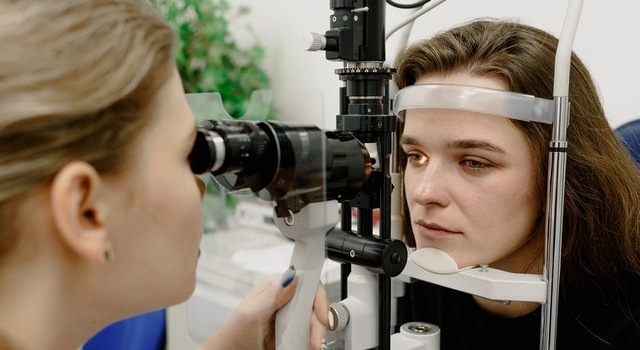 Do you often experience headaches, dizziness, or eye strain? While there are many causes for it, one of the most common reasons for it is an eye condition known as binocular vision dysfunction (BVD).
Do you often experience headaches, dizziness, or eye strain? While there are many causes for it, one of the most common reasons for it is an eye condition known as binocular vision dysfunction (BVD).
In those with healthy binocular vision, the eyes work in tandem and are perfectly in sync at all times, which allows them to send one clear, focused picture to the brain.
But when the eyes are not perfectly synchronized, as in the case of BVD, you struggle to see one clear image, which in turn leads to discomforts such as double vision, dizziness, and headaches.
If you have any of these symptoms, contact Mascoutah Eye Care in Mascoutah today to get your BVD eye exam and determine whether you have binocular vision dysfunction may be at the source of your uncomfortable symptoms.
What's a BVD Eye Exam?
During a regular eye exam, your eye doctor performs a series of tests to measure your visual acuity, check for common eye disorders and assess your eye health.
Whereas a BVD exam specifically looks for visual misalignment — meaning, when a person’s two eyes point in different directions. Even the slightest misalignment can cause BVD.
Left untreated, patients with BVD tend to experience a gamut of symptoms, including headaches, dizziness, vertigo, eye pain, eye fatigue, eye strain, nausea and even reading challenges.
Do You Have Eye Pain, Fatigue & Strain?
Even slightly misaligned eyes lead the brain to tell the eye muscles to force the eyes back into the correct position. Eventually, the eyes will try to move out of alignment again (realignment), and the corrective cycle begins again. This vicious cycle of misalignment and realignment places a lot of stress on the muscles, causing pain, fatigued and strained eyes.
Headaches
One of the most common symptoms of BVD is frequent headaches and migraines. If you've been diagnosed with sinus headaches or chronic migraines and none of the conventional treatments have worked, a BVD eye exam can help you figure out whether this condition may be at the source of your discomfort.
Nausea, Dizziness & Vertigo
Many people who suffer from nausea, dizziness, and vertigo don’t realize that these symptoms could be caused by a binocular vision problem. If you experience motion sickness or have trouble walking due to poor balance or dizziness, consider scheduling a BVD exam.
Reading Difficulties
BVD can also cause blurred vision, making it difficult to concentrate or focus on words when reading or working on the computer. It's not uncommon for those with binocular vision dysfunction to struggle at school and at work, which in turn, can affect confidence.
How We Can Help
Your BVD exam will reveal whether you have the condition and if so, your eye doctor will provide aligning micro-prism lenses to alleviate your symptoms. A complete neuro visual exam will also check for other binocular vision issues such as convergence insufficiency, vertical heterophoria, and superior oblique palsy. These conditions often require vision therapy as well as prism glasses to significantly reduce or even eliminate your symptoms.
Contact Mascoutah Eye Care to get to the root of your uncomfortable BVD-related symptoms and to get effective treatment so you can live your best life!
Our practice serves patients from Mascoutah, Belleville, O'Fallon, and Edwardsville, Illinois and surrounding communities.
Q: Is Binocular Vision Dysfunction Serious?
- A: Binocular vision dysfunction is a serious condition that can interfere with your life. You may feel dizzy, disoriented, lightheaded and experience migraines. BVD patients may find it dangerous to drive, especially around curves. Sitting or standing suddenly can be difficult. Another problem with BVD is that it can be misdiagnosed at first. Once you are diagnosed properly, your eye doctor will give you treatments to manage BVD symptoms.
Q: How Is BVD Treated?
- A: There are two main ways to treat BVD:
- Prism lenses
- Vision therapyPrism lenses change the way the light hits your eyes so your brain can [synthesize] the images from your eyes so you can see properly. Vision therapy corrects BVD through exercises to build visual skills and improve communication between the eyes and the brain.

